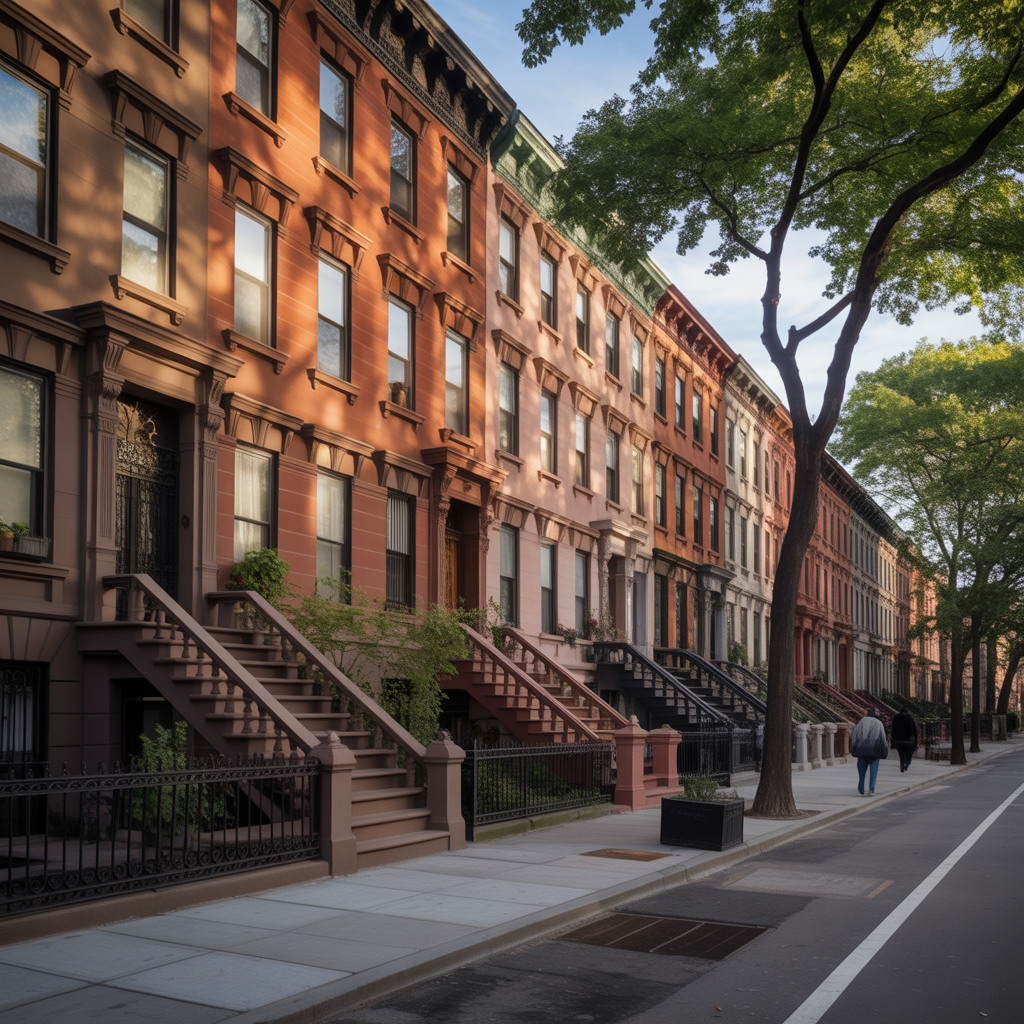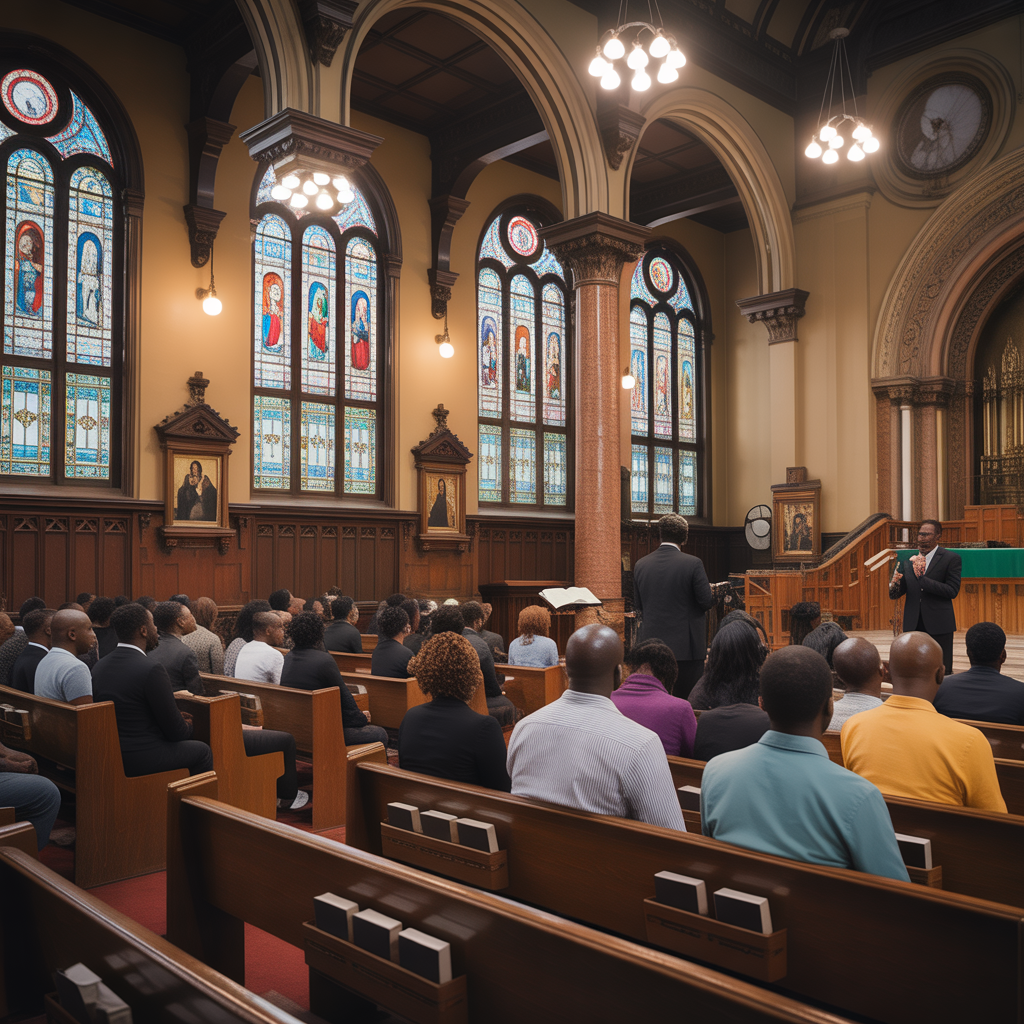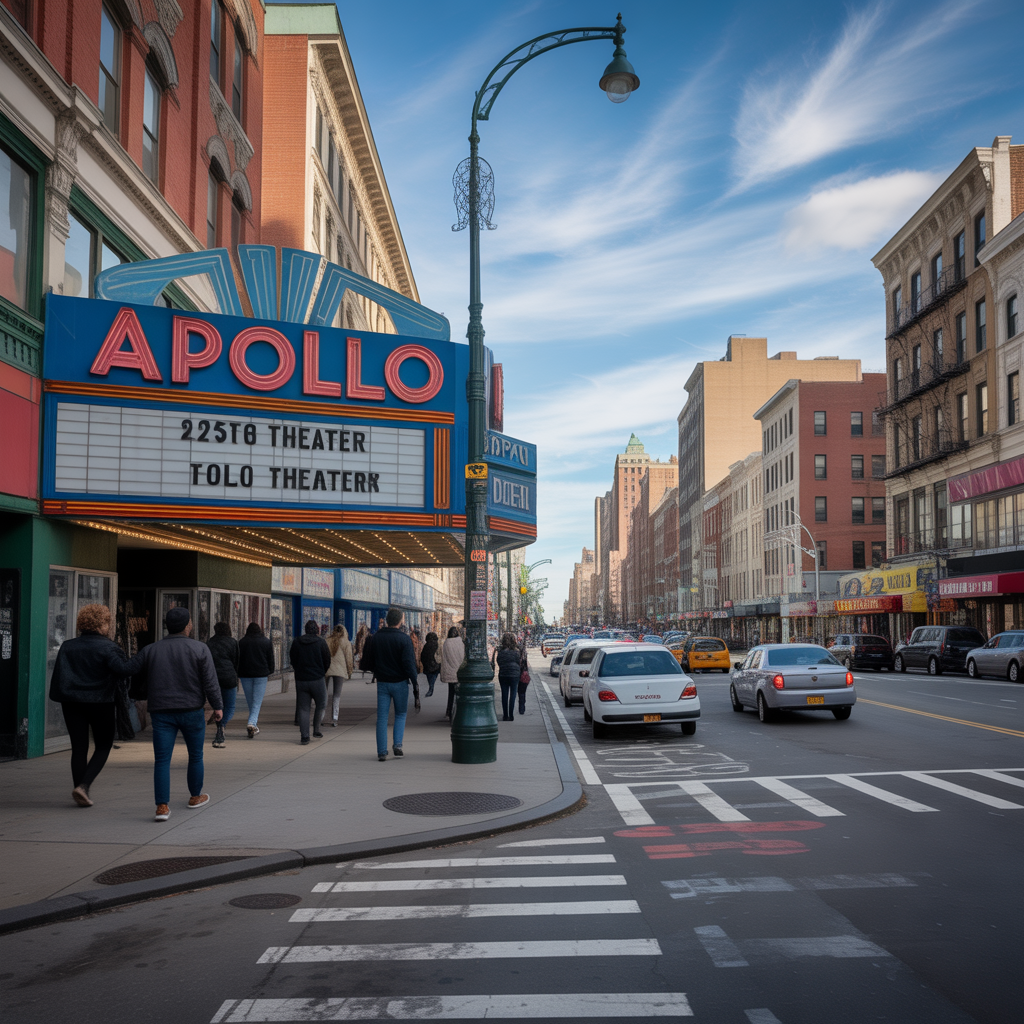From its humble beginnings as a Dutch colonial settlement to its emergence as the epicenter of African American culture, Harlem stands as one of New York City’s most historically significant and culturally vibrant neighborhoods. This iconic Manhattan district has witnessed transformative moments in American history, from the Harlem Renaissance to the Civil Rights Movement, while continuing to evolve as a dynamic community that honors its past while embracing the future.
The Historical Foundation of Harlem
Early Origins: From Dutch Settlement to Growing Community
Harlem’s story begins in the 1600s when Dutch colonists established “Nieuw Haarlem,” named after the city of Haarlem in the Netherlands. Initially developed as an agricultural community, this northern Manhattan area remained largely rural for centuries, connected to the growing city below by a few key transportation routes.
The construction of elevated railroad lines in the late 1800s marked a turning point, making Harlem more accessible and attractive to developers. Grand apartment buildings and elegant brownstones began to rise, intended to house New York’s growing middle and upper classes. However, economic downturns and overbuilding in the early 1900s created opportunities for new communities to take root.
The Great Migration: A Community Takes Shape
Between 1900 and 1930, approximately six million African Americans moved from the rural South to urban centers in the North, with Harlem becoming the destination of choice for many seeking better economic opportunities and escape from Jim Crow laws. Real estate entrepreneur Philip Payton Jr., known as the “Father of Colored Harlem,” played a crucial role in opening previously all-white buildings to African American tenants.

This massive demographic shift transformed Harlem into the largest African American community in the United States. The neighborhood became a beacon of hope and opportunity, attracting not only working-class families but also professionals, artists, writers, and intellectuals who would soon make Harlem synonymous with African American culture and achievement.
The Harlem Renaissance: A Cultural Revolution
The 1920s and 1930s witnessed an unprecedented flowering of African American arts, literature, and intellectual thought known as the Harlem Renaissance. This cultural movement positioned Harlem as the global capital of Black culture, producing legendary figures whose influence extended far beyond the neighborhood’s boundaries.
Langston Hughes revolutionized American poetry with his jazz-influenced verses, while Zora Neale Hurston brought Southern African American folklore to literary prominence. Duke Ellington’s sophisticated jazz compositions elevated the genre to new artistic heights, and the neighborhood’s nightclubs became gathering places for both Black and white audiences seeking authentic American music.
The impact of the Harlem Renaissance extended beyond entertainment, fostering intellectual movements led by figures like W.E.B. Du Bois and Marcus Garvey, whose ideas about civil rights and Pan-Africanism would influence generations of activists and thinkers.
Cultural Landmarks and Must-Visit Attractions
Iconic Music and Entertainment Venues
The Apollo Theater stands as perhaps Harlem’s most famous landmark, having launched the careers of countless legendary performers since 1934. Located at 253 West 125th Street, the Apollo continues to host live performances, with its famous Amateur Night providing a platform for emerging artists every Wednesday. The theater’s Hall of Fame and backstage tours offer visitors insight into the venue’s remarkable history.
While the original Cotton Club closed decades ago, its legacy lives on through various incarnations that continue to celebrate Harlem’s jazz heritage. These venues maintain the tradition of combining world-class entertainment with the sophisticated atmosphere that made the original club famous during the Jazz Age.
Sylvia’s Restaurant, established in 1962, has earned its reputation as the “Queen of Soul Food.” Located on Malcolm X Boulevard, this family-owned institution serves traditional Southern cuisine that has attracted everyone from neighborhood residents to international celebrities. The restaurant’s Sunday gospel brunch combines exceptional food with live musical performances.
Red Rooster, Chef Marcus Samuelsson’s acclaimed restaurant, represents modern Harlem dining while honoring the neighborhood’s cultural roots. The establishment features live music, art exhibitions, and a menu that reflects both traditional African American cuisine and international influences.
Religious and Spiritual Centers
The Abyssinian Baptist Church, founded in 1808, holds tremendous historical significance as one of the first African American churches in New York City. Under the leadership of Rev. Adam Clayton Powell Sr. and later his son, the church became a center of civil rights activism. The Gothic Revival architecture and powerful gospel services continue to draw visitors from around the world.
St. Philip’s Episcopal Church represents another cornerstone of Harlem’s religious community, with its striking Romanesque Revival architecture and long history of community service. The church has played important roles in education and social services throughout Harlem’s development.

Museums and Cultural Institutions
The Studio Museum in Harlem, established in 1968, showcases contemporary art by African diaspora artists from around the world. The museum’s rotating exhibitions, artist residency programs, and educational initiatives make it an essential destination for understanding contemporary Black artistic expression.
The Schomburg Center for Research in Black Culture, part of the New York Public Library system, houses one of the world’s most comprehensive collections of materials documenting Black experiences. The center regularly hosts exhibitions, lectures, and cultural events that illuminate African diaspora history and culture.
Marcus Garvey Park serves as both recreational space and cultural venue, hosting outdoor concerts, festivals, and community events throughout the year. The park’s iconic fire watchtower provides panoramic views of the neighborhood and serves as a symbol of Harlem’s resilience.
Architectural Heritage and Historic Districts
Distinctive Building Styles
Harlem’s architectural landscape tells the story of different eras and communities. The neighborhood’s famous brownstones, built primarily between 1870 and 1920, represent various architectural styles including Italianate, Neo-Grec, and Queen Anne. These buildings, with their distinctive stoops and ornate details, have become synonymous with New York City residential architecture.
Pre-war apartment buildings demonstrate the neighborhood’s early 20th-century ambitions, featuring grand lobbies, high ceilings, and elegant facades that were originally designed to attract affluent residents. Many of these buildings have been carefully restored and continue to provide distinctive housing options.
Notable Historic Districts
Strivers’ Row, officially known as the St. Nicholas Historic District, encompasses some of Harlem’s most architecturally significant buildings. Designed by renowned architects including Stanford White, these blocks feature distinctive row houses that attracted successful African American professionals during the early 1900s.
Hamilton Heights, in the western portion of Harlem, showcases well-preserved residential architecture from the late 19th and early 20th centuries. The neighborhood’s tree-lined streets and carefully maintained buildings reflect ongoing preservation efforts and community pride.
Exploring Harlem’s Diverse Neighborhoods
Central Harlem: The Cultural Heart
The stretch of 125th Street serves as Harlem’s main commercial corridor, featuring a mix of national retailers, local businesses, restaurants, and cultural venues. This bustling thoroughfare connects many of Harlem’s most important landmarks and provides an excellent introduction to the neighborhood’s energy and diversity.
The area around 125th Street and Lenox Avenue represents the neighborhood’s commercial center, where visitors can experience everything from street vendors selling books and artwork to upscale boutiques and established institutions like the Apollo Theater.
East Harlem: Latino Cultural Influence
East Harlem, known locally as El Barrio, reflects the neighborhood’s significant Latino population, particularly Puerto Rican and Mexican communities. The area features authentic restaurants, markets, and cultural organizations that celebrate Hispanic heritage while contributing to Harlem’s overall cultural diversity.
The food scene in East Harlem offers exceptional Mexican, Puerto Rican, and Dominican cuisine, with family-owned restaurants serving traditional dishes alongside innovative fusion creations. Local markets provide ingredients and products that serve both resident communities and curious visitors.
West Harlem and Hamilton Heights
The western portions of Harlem feature a more residential character, with tree-lined streets and well-maintained buildings that house families and young professionals. Columbia University’s expansion into this area has brought new investment and development while raising questions about gentrification and community preservation.
This area offers quieter exploration opportunities, with beautiful architecture, small parks, and local businesses that serve primarily neighborhood residents rather than tourists.
Contemporary Arts and Cultural Scene
Modern Music Heritage
While Harlem’s jazz legacy remains strong, the neighborhood has also played important roles in the development of hip-hop and contemporary R&B. Local venues continue to showcase emerging artists while established institutions maintain connections to musical traditions that originated in the neighborhood decades ago.
Current music festivals and regular performance series provide opportunities to experience both historical musical styles and contemporary innovations. Many venues offer programming that connects past and present, helping visitors understand the evolution of American popular music.
Visual Arts and Creative Spaces
Contemporary Harlem supports numerous artist studios, galleries, and creative spaces that showcase work by local and international artists. These venues often focus on themes related to African diaspora experiences while embracing diverse artistic styles and mediums.
Street art and murals throughout the neighborhood reflect both historical themes and contemporary social issues. Walking tours and self-guided exploration reveal artistic expressions that range from formal public art installations to spontaneous community creations.

Food Culture and Dining Experiences
Traditional Soul Food Heritage
Harlem’s soul food tradition represents much more than cuisine—it embodies cultural heritage, family traditions, and community gathering. Restaurants like Amy Ruth’s, known for its chicken and waffles, and Jacob Restaurant, serving traditional Southern comfort food, maintain authentic preparations that have been passed down through generations.
These establishments often feature recipes that originated in the American South and were adapted by families who moved to Harlem during the Great Migration. Signature dishes include fried chicken, collard greens, mac and cheese, cornbread, and various preparations of pork and seafood.
International Cuisine and Modern Dining
Contemporary Harlem’s dining scene reflects the neighborhood’s increasing diversity, with restaurants representing Caribbean, African, and Latin American traditions alongside innovative establishments that blend multiple cultural influences.
Caribbean restaurants serve authentic Jamaican, Dominican, and Puerto Rican dishes, while African establishments offer cuisine from various regions of the continent. These restaurants provide opportunities to experience authentic international flavors without leaving New York City.
Markets and Local Food Shopping
The Harlem Farmers Market operates year-round, providing fresh produce, prepared foods, and artisanal products from regional producers. The market serves both practical shopping needs and cultural exchange opportunities.
Specialty food stores throughout the neighborhood offer ingredients and products that serve specific cultural communities while welcoming curious visitors interested in exploring new flavors and cooking techniques.
Practical Visitor Information
Transportation and Getting Around
Multiple subway lines provide excellent access to Harlem from throughout New York City. The A, B, C, and D trains serve various parts of the neighborhood, with 125th Street stations offering connections between lines. The 4, 5, and 6 trains provide service along the eastern edge of Harlem.
Bus routes complement subway service, with crosstown buses along 125th Street and north-south routes connecting Harlem to other Manhattan neighborhoods. Many visitors find that walking provides the best way to experience the neighborhood’s street life and architectural details.
While Harlem is generally safe for visitors, standard urban precautions apply. Stay aware of surroundings, avoid displaying expensive items conspicuously, and stick to well-traveled areas, especially during evening hours.
Best Times to Visit
Spring and fall offer ideal weather for walking tours and outdoor events. Summer brings numerous festivals and outdoor concerts, though higher temperatures and humidity may affect comfort levels. Winter visits can be rewarding for indoor cultural activities, though some outdoor events may be cancelled.
Weekend visits often provide more cultural programming, including gospel services, live music, and special events. However, weekday visits may offer more opportunities for in-depth conversations with local business owners and community members.
Accommodation Options
While Harlem has fewer hotel options than other Manhattan neighborhoods, several establishments provide comfortable accommodations with neighborhood character. Boutique hotels and bed-and-breakfast options often offer more personalized experiences and connections to local culture.
Many visitors choose to stay in nearby neighborhoods like the Upper West Side or Midtown and visit Harlem for day trips, taking advantage of excellent public transportation connections.
Cultural Events and Annual Celebrations
Major Annual Events
Harlem Week, typically held in August, represents the neighborhood’s largest annual celebration, featuring concerts, street festivals, arts exhibitions, and cultural programming that spans multiple weeks. The event showcases both historical heritage and contemporary achievements.
Various jazz festivals throughout the year celebrate the neighborhood’s musical legacy, often featuring both established artists and emerging talent. These events frequently take place in historic venues, providing authentic atmospheric experiences.
Regular Cultural Programming
Sunday gospel services at various churches offer visitors opportunities to experience powerful musical traditions in their authentic settings. Many churches welcome respectful visitors, though it’s important to observe proper etiquette and dress codes.
Regular programming at cultural institutions provides ongoing opportunities for learning and engagement. Many venues offer educational workshops, lecture series, and community events that provide deeper insights into Harlem’s culture and history.
Planning Your Harlem Visit
Suggested Itineraries
A half-day cultural tour might include visits to the Apollo Theater, Sylvia’s Restaurant for lunch, and a walk through the historic Strivers’ Row district. This provides a good introduction to Harlem’s major themes and landmarks.
Full-day exploration can incorporate museum visits, multiple neighborhood areas, dining experiences, and possibly a gospel service or live music performance. This allows for deeper engagement with the community and its culture.
Weekend visits might include participation in cultural events, farmers market shopping, and more extensive walking tours that cover multiple historic districts and architectural styles.
Insider Tips for Respectful Tourism
Remember that Harlem is a living community where people work, live, and maintain daily routines. Approach visits with respect for residents and local customs. Support community businesses when possible, and engage with local guides and cultural institutions for authentic perspectives.
Photography is generally welcome in public spaces, but be respectful when photographing people or private property. Many businesses and cultural venues have specific policies about photography that should be observed.
Engage with community members and business owners when appropriate—many are proud of their neighborhood and happy to share insights with respectful visitors. However, be mindful of people’s time and privacy.
Harlem’s significance extends far beyond its geographical boundaries, representing achievements, struggles, and cultural innovations that have shaped American society. The neighborhood continues to evolve while maintaining strong connections to its remarkable heritage. Whether you’re interested in music history, architectural beauty, culinary traditions, or contemporary arts, Harlem offers experiences that will deepen your understanding of American culture and inspire appreciation for community resilience and creativity.
Plan your visit with intention and respect, allowing time to absorb the neighborhood’s unique atmosphere and rich stories. Harlem rewards visitors who approach with curiosity, openness, and appreciation for the community’s ongoing contributions to American cultural life.
